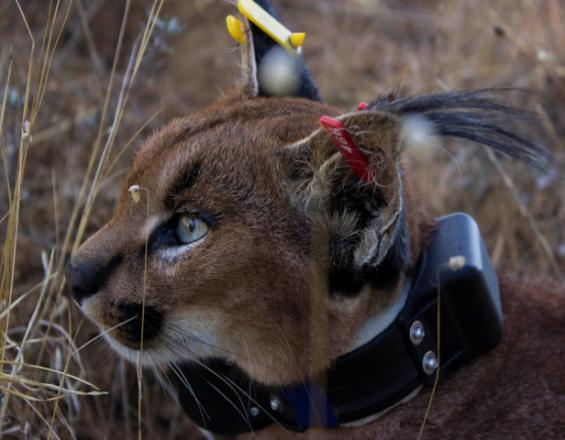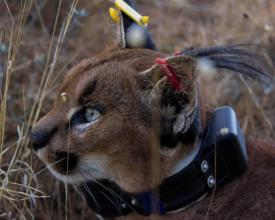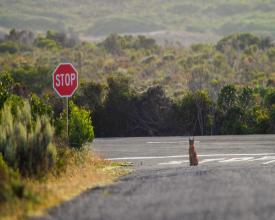
Le projet Caracal urbain

Le projet Urban Caracal est un programme de recherche visant à établir des informations de base sur la population de caracals(Caracal caracal) de la péninsule du Cap, ainsi qu'à évaluer les effets de l'urbanisation sur l'espèce et les menaces qui pèsent sur sa survie dans la région.
Les caracals sont des chats sauvages de taille moyenne originaires de la région et l'un des derniers grands prédateurs de la péninsule du Cap. En les étudiant, le projet espère mieux comprendre comment l'urbanisation peut menacer la faune sauvage en Afrique du Sud et dans d'autres parties du monde, également menacées par l'urbanisation.
Les objectifs spécifiques du projet sont les suivants
- Obtenir des informations sur la taille de la population, la santé des individus et la distribution des caracals dans la péninsule.
- Évaluer les effets de l'urbanisation sur le comportement, les mouvements, le régime alimentaire et la santé génétique des caracals de la péninsule.
- Évaluer les menaces qui pèsent sur la survie des caracals dans la péninsule et, éventuellement, dans d'autres parties de l'Afrique du Sud.
Contexte
Défis à relever
Emplacement
Impacts
Les caracals sont des animaux insaisissables, ce qui les rend difficiles à étudier. C'est pourquoi le projet utilise des colliers GPS pour étudier les chats. Des échantillons sont également prélevés pour des tests génétiques, des tests sur les maladies et des tests sur les pesticides. Grâce à des efforts intensifs de piégeage, combinés à la collecte de caracals morts trouvés de manière opportuniste (généralement des animaux tués sur la route), le projet génère des informations sur les mouvements, la génétique, les maladies et les pesticides à une échelle fine concernant les animaux.
Les autopsies pratiquées pendant 5 ans montrent que les principales menaces qui pèsent sur les caracals de la région sont les collisions avec des véhicules, les maladies ou les poisons, le braconnage, la gestion létale, les attaques de chiens et la mort causée par d'autres caracals. 73 % des caracals morts découverts dans le cadre du projet ont été heurtés par des voitures, mais il est probable qu'il y ait beaucoup plus de décès que ce que l'équipe est en mesure de collecter.
Une étude sur l'exposition aux pesticides a révélé que 94 % des caracals étaient exposés à des raticides domestiques courants, et l'exposition à ce pesticide a été impliquée dans la mort de plusieurs caracals. Le projet a également détecté une exposition généralisée au DDT, bien que les implications de cette exposition ne soient pas encore connues.
Les études génétiques ont révélé des niveaux élevés de consanguinité dans la population, ce qui pourrait menacer la viabilité de la population à long terme. Les biologistes du projet poursuivent l'étude des questions génétiques afin d'estimer le délai d'extinction de la population et d'explorer les possibilités de sauvetage génétique.










